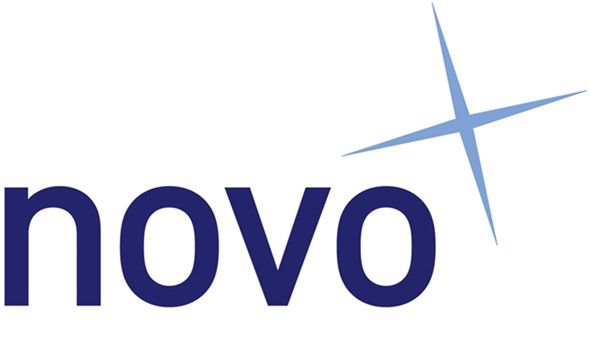8 Effective Ways to Foster a Culture of Collaboration in the Workplace

According to a recent survey, 97% of employees and executives a believe lack of alignment within a team impacts the outcome of a task or project. What’s more, around 75% of employers rate teamwork and collaboration in the workplace as ‘very important’.
It’s plain to see that in today’s world, collaboration is the key to success and by fostering a collaborative culture in the workplace, an organisation stands to become more cohesive, more innovative and of course, more productive.
In most cases, several heads working together are better than one, and if your business is lacking in the teamwork department, it might be time to take a look at your company culture.
Working in isolation does not always result in effective outcomes, nor will it drive the business forward. Individual entities working against each other can also lead to a hostile working environment.
To help you foster a culture of collaboration and teamwork, here are eight effective tips that will help you boost employee engagement, encourage innovation and ultimately, yield the results you deserve.
8 ways to foster collaboration and teamwork in the workplace
1) Hire with collaboration in mind
If you want to foster a collaborative culture in the workplace, you will need to start from the ground up – which means revisiting your hiring process.
You might hire a dozen of the world’s most talented individuals in a particular field, but if they don’t work well as part of a team, your company will not flourish as one well-oiled, forward-thinking entity.
To ensure you hire talented team players from the start, include interview questions or scenario-based group interviews that will help you understand whether or not your candidates are team players and if they will fit seamlessly into your newfound a culture of collaboration.
2) Get to know each other
Getting to know one another may sound obvious, but you’d be amazed at how many companies overlook this fundamental yet essential step in the process.
Getting to know, and understand, all of your team members is a great way of working towards a more collaborative professional environment. If your employees gain a deeper understanding of each other’s roles within the business, how they best communicate, and their strengths as well as weaknesses, everyone will work more collaboratively, cohesively and effectively.
Encourage out of work social events and consider organising company retreats to help build relationships and foster collaboration among your staff. Nurturing this kind of professional bonding also helps to boost staff retention rates as 63% of people said they would be more likely to stay in a job if they felt connected with their co-workers and senior managers.
3) Lead by example
As a senior member of staff, to a large extent, your employees will look to you for guidance. You set an example of how to behave in the workplace and, more importantly, how to succeed as well as progress within the company – this is something you should never forget.
It’s not enough for you to tell your team that they need to work collaboratively – for your company’s culture to change for the better – you need to show your staff that collaboration is a valued attribute. To make a real change, you must take an active role in the process and provide your team with working examples of how to achieve a collaborative working environment.
Whenever you ask something new of your team, back it up with a positive example and always be prepared to lead the way – it’s not enough to merely talk the talk, to make an impact, you have to walk the walk.
4) Restructure corporate goal-setting
According to DCR Strategies, a corporate incentive programme encouraged 66% of employees to stick with their job.
Setting clear cut goals and targets for your employees and rewarding them for achieving them is an effective way to motivate people, giving them the boost to work harder and push themselves further.
To encourage a culture of collaboration and teamwork in the workplace, shifting your focus from individual targets to team-centric goals is a must. If everyone is working towards one common goal, it will only be a short while before a more supportive and cohesive working environment will prevail.
5) Discourage high-competitiveness
A certain level of competition between co-workers can be considered healthy and even help people surpass their abilities in certain areas.
However, with collaboration, too much emphasis on competition should be discouraged as it will only detract from the team working environment you’re hoping to achieve.
For instance, if an individual discovers a new way of carrying out a task that they feel makes them far more efficient at their role, this notion or process should be shared among the team so that everyone can benefit. If said employee is trying to compete too much with their co-workers in an environment that only rewards individual achievement, they might feel inclined to keep their idea to themselves and gain a competitive advantage, stunting the collaborative process as a result.
6) Revamp business meetings
Meetings are often dreaded by employees, as they are seen as an unproductive use of time. In fact, 39% of professionals have admitted to falling into a slumber during business meetings.
To change these negative perceptions towards work-based meetings, you should change the way your approach them at its core.
Ensure all of your meetings promise to be a productive use of your employees’ time by encouraging open communication and collaboration rather than allowing them to be led by one central speaker.
Look at the way you run your business meetings and assess whether they are encouraging a collaborative working environment. Treat all future meetings to be an open forum that gives everyone the power to contribute and share their ideas freely. Encourage staff to speak up in a conversational and non-invasive fashion, listening openly to every thought, feeling and opinion that is shared. Everyone should feel like they have an equal say and are involved in the company’s decisions and a business meeting is the perfect place to make to make this happen.
7) Create a collaborative workspace
By changing your office arrangements, you will foster a far more collaborative culture throughout the business.
Look at your office interiors and consider whether they encourage or discourage a collaborative working environment.
If all senior executives work behind closed doors, many employees will feel they are inaccessible and unapproachable, which in turn, will go against the grain of your desired collaborative company culture.
Leaving your office door open will make it clear that you’re available to talk to your team at any time of the working day and will help encourage communication as well as collaboration in a significant way.
Also, it’s worth considering that offices filled with individual cubicles are also becoming less common in the workplace. Now more than ever, senior executives are beginning to understand that in some instances, cubicles work as barriers and serve to stunt collaborative working.
Open-plan offices or workspaces with dedicated collaborative spaces help to foster a more open and communicative atmosphere, encouraging team members to discuss important issues, brainstorm and complete projects together helping to retain executive talents.
8) Collaboration tools
Communication is an enormous part of effective collaboration.
Now, despite the evolution of technology facilitating increased connectivity through personal devices including smartphones and tablets, effective communication among corporate teams has become more of a challenge due to the rise in remote working.
As a result of this seismic shift, having the tools and processes to help assist with effective communication has become all the more important. By integrating collaborative tools into your company’s everyday processes and making the necessary efforts to ensure that everyone is on board, you will help encourage a productive environment even in a remote working situation.
Collaborative tools such as Slack make an effective way for teams to communicate in real-time rather than getting lost in disjointed email chains that slow down the collaborative process.
The average worker is said to spend 28% of their working week managing emails, so by streamlining your communicative process with a dedicated collaboration platform will help save a great deal of time.
Video conferencing tools are also an effective means of including remote workers in pivotal team meetings in a productive and professional fashion.
Finally, project management tools including Asana ensure important tasks remain cohesive from start to finish, helping everyone involved understand which project is being worked on and how it’s progressing. This style of project management tool encourages open communication, streamlines productivity and helps everyone keep to key deadlines as a collective.
How to foster a culture of collaboration – Conclusions
“Alone we can do so little; together we can do so much” – Helen Keller
In the modern age, businesses, brands and organisations that understand the value of collaboration will thrive long into the future. By following these tips to actively encourage collaboration as part of your company culture, you stand to enjoy a long and prosperous future in today’s world, tomorrow’s world, and beyond.
If you’re interested in recruiting top-level executives, our expert executive search consultants have a wealth of commercial experience and unrivalled insight into their specialist sectors. Click here to get in touch.














